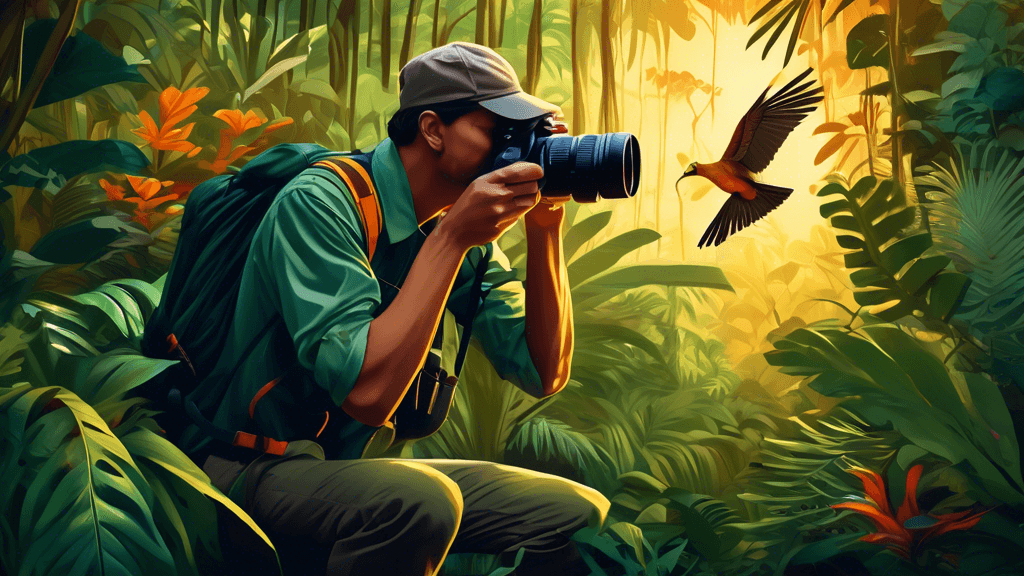
Capturing Conservation: Using Photography to Protect Our Planet
Share
The Power of Photography in Environmental Conservation
Have you ever been moved by a stunning photograph of a melting glacier or a story told through the eyes of wildlife captured in a single frame? Photography is not just an art form; it is a powerful tool that can influence perceptions, evoke emotions, and drive change. In the realm of environmental conservation, photography plays a pivotal role in not only raising awareness but also in influencing policy and encouraging action. But how does a photograph achieve such impact, and what can we do to harness this medium for the good of our planet?
Visual Storytelling and Emotional Connection
Visual storytelling is a compelling method of communication that can often convey messages more powerfully than words alone. When photographers capture images of environmental issues, those images have the potential to become iconic representations of broader concerns. Consider the work of photographers like Ansel Adams, whose stunning black-and-white images of Yosemite Valley helped spur the creation of the National Park Service and broad public support for wilderness conservation. What makes these images so influential?
- Emotional Impact: Photos can evoke strong emotions, making the viewer feel a direct connection with the subject matter.
- Universal Language: Images can be understood and felt by people across different cultures and languages, broadening their impact.
- Reality Capture: Photography has the unique ability to capture things as they are, providing undeniable evidence that can be used for advocacy and policy change.
“Photography is a powerful tool because it captures the truth and presents it in a way that cannot be ignored,” explains renowned conservation photographer James Balog. His project, Extreme Ice Survey, visually documented the rapid retreat of glaciers, providing undeniable evidence of climate change's drastic impacts on frozen landscapes.
The Role of Photographers in Conservation Efforts
Photographers dedicated to conservation go beyond taking beautiful images; they are storytellers, advocates, and often activists. They immerse themselves in environments, sometimes risking their lives to expose truths that need to be shared. Their work shapes public understanding and can directly influence conservation efforts. There are several ways photographers engage in conservation:
- Educational Outreach: Many work with organizations to produce educational materials that highlight specific conservation issues.
- Direct Advocacy: Providing visual evidence that can be used in campaigns or to influence policy decisions.
- Community Engagement: Engaging local communities to understand and support conservation efforts, often turning local people into advocates and guardians of their environments.
“Each image a conservation photographer produces is a story planted into the minds of people, and these stories can sow seeds for action,” notes Cristina Mittermeier, a conservationist and photographer who has been influential in the field.
How Can We Use Photography to Further Conservation?
As individuals, we don’t all need to be professional photographers to help the planet. With today’s technology, everyone can participate in spreading awareness and pushing for change. Here are some ways to contribute:
- Support Conservation Photographers: Follow their work, share it on social media, and participate in their projects when opportunities arise.
- Document Local Environment: Use your camera or smartphone to document changes in your local environment and share these observations with your community or social media networks.
- Educate Yourself and Others: Use photography exhibitions, books, and online resources to learn about environmental issues and share this knowledge with others.
Finally, think about how your photographs, whether shared with just friends or a larger community, can make an impact. Could you inspire someone to care, or even better, to act?
Conclusion
The intersection of photography and environmental conservation provides a powerful platform for story-telling and advocacy. As consumers of this visual content, we can increase our awareness and understanding of environmental issues. As potential creators, we harness the power to influence and advocate for our planet’s future. Whether you are a professional photographer or a concerned citizen with a smartphone, your images can contribute to conserving the beauty and diversity of our world.
Do you feel inspired to pick up your camera and capture images that advocate for environmental protection? What story would you like your photographs to tell? Remember, every frame counts towards building a sustainable future.





